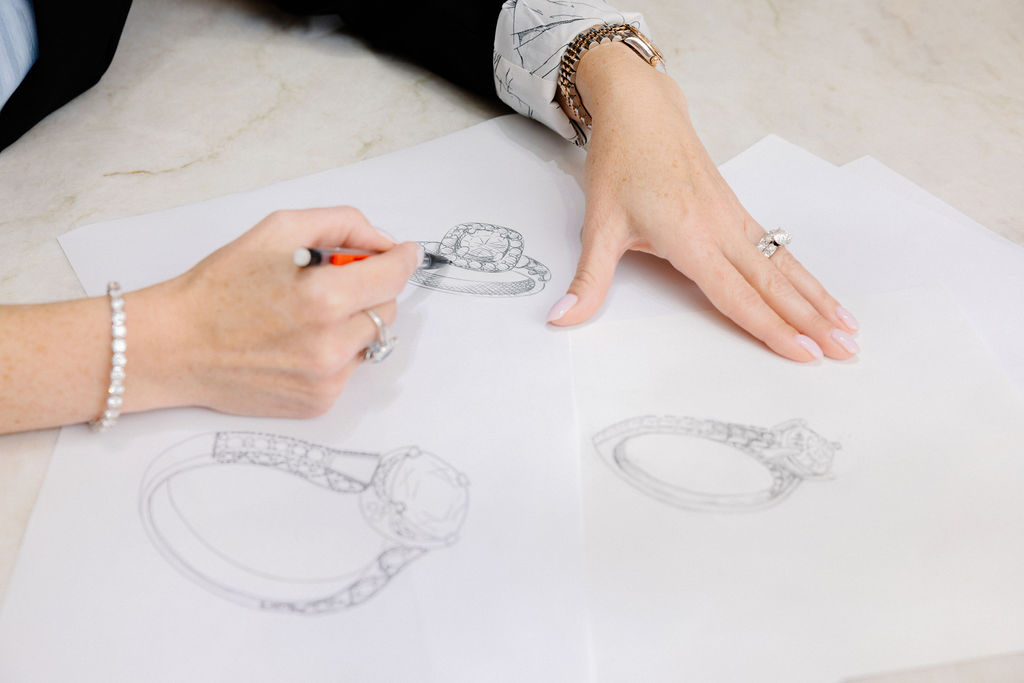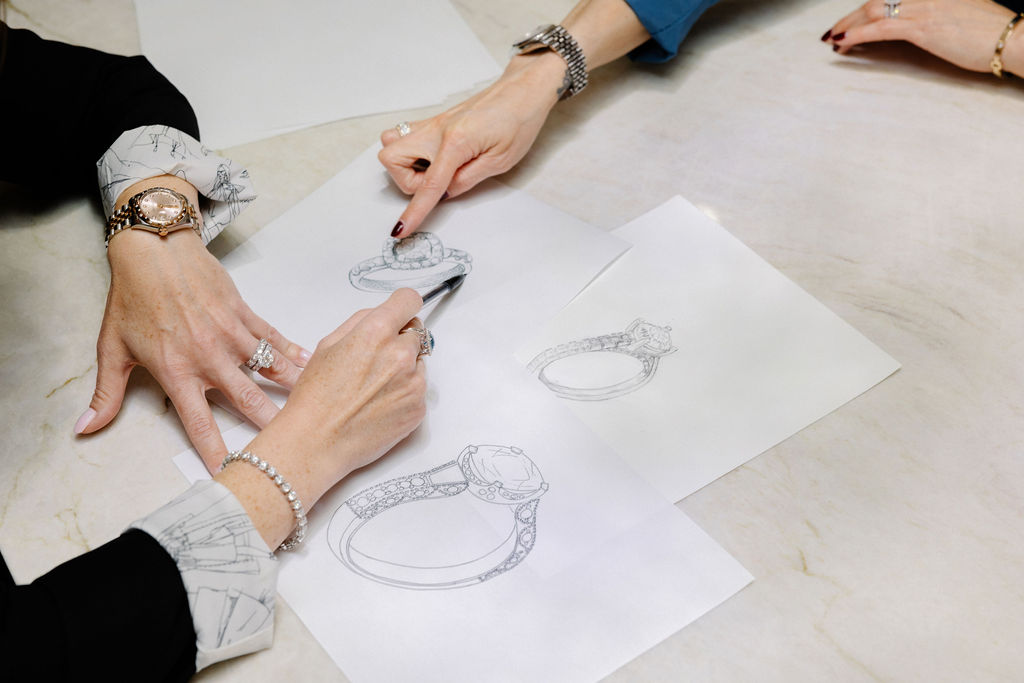
Are you tired of seeing the same old designs in every store window? Have you ever wondered what it would be like to wear a unique piece of jewelry that is unique, one of a kind? Well, you’re in luck! Designing custom jewelry is the perfect way to express your personal style and bring your creative visions to life. And the best part about custom jewelry...it's designed (pun intended) for everyone! You can know the exact custom design down to the size of the stones you want to use, or you can simply know you would like to create a unique piece. Jewelry design is truly for all! But be fore you jump into the deep end, it's important to remember that great design doesn’t happen by accident. Custom jewelry is an art form, and like any masterpiece, it is not mass produced. It requires careful planning and consideration.
By the end of this blog you might just find your mind racing and full of ideas. Between custom earrings, perhaps a custom bracelet or even a custom necklace; the possibilities with custom jewelry are truly endless! Which gives us a lot of things to talk about...
Today, we're going to dive headfirst into the entire process of creating that unique, special piece through custom design. You'll also leave with the five most essential elements you need to think about when designing your dream piece. Ready? Let’s sparkle with some custom jewelry design!
You are in store for a real treat today!
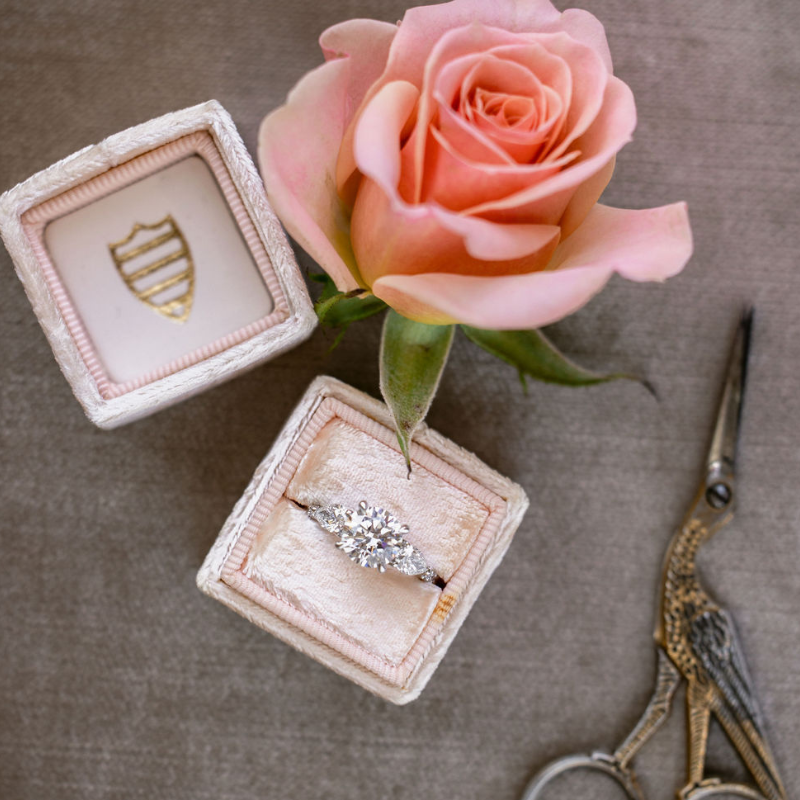
Element 1: Concept & Inspiration
Ah, the moment when inspiration strikes — there's nothing quite like it, is there? But let's take a step back and focus on the foundational cornerstone of any custom jewelry piece: the concept.
What is the Concept?
In a nutshell, your concept is the idea, the heart of your jewelry creation. Consider yourself an architect; you wouldn't begin construction without a blueprint, would you? Similarly, before diving into the realm of jewels, metals, and workmanship, you need a vision to guide you. Do you want your item to represent love or adventure? Is it a modern piece of art with abstract inspirations, or are you taking a nostalgic trip back in time with a vintage flair? Once you've decided on an idea, every other decision — from materials to design details — becomes easier. The notion serves as your North Star, guiding you through the exhilarating but occasionally daunting process of actually production.
Finding Inspiration
So, where do you find this mythical 'concept'? Honestly, inspiration can sneak up on you from the most unexpected corners:
Nature: Have you ever noticed how a leaf's exquisite design or the magnificent colors of a sunset make you feel? Why not include that into your one-of-a-kind piece? Consider a leaf-shaped pendant studded with jewels that resemble the hues of a sunset. Isn't that incredible?
Art & Culture: From Van Gogh's swirling patterns in "Starry Night" to the clean lines of the Guggenheim Museum, art and architecture provide endless inspiration. A bracelet inspired by a favorite picture may be a wearable work of art with high cultural significance.
Personal Milestones: It is a time-honored habit to commemorate personal achievements with jewelry. Whether it's an engagement ring with pieces from your first date or a locket that opens to show your child's birthstone, the nostalgia of the piece makes it precious.
Creating Mood Boards
Welcome to the exciting part: mood boards! Consider it a sandbox for your imagination. Pin photos, colors, and even textures that relate to your concept on Pinterest. Old-school? A cork board with magazine clippings and fabric samples works just as well. Your mood board is a visual symphony in which every piece complements your principal notion. As you put these pieces together, you'll notice that particular patterns, colors, or themes begin to stand out. That's your notion become clearer and more developed.
The concept is more than simply a vague concept; it serves as the conceptual foundation for your unique jewelry. It acts as a guiding star that navigates you through the amazing adventure of creativity, whether inspired by the world around you or milestones that are near to your heart. Good luck with your ideas!
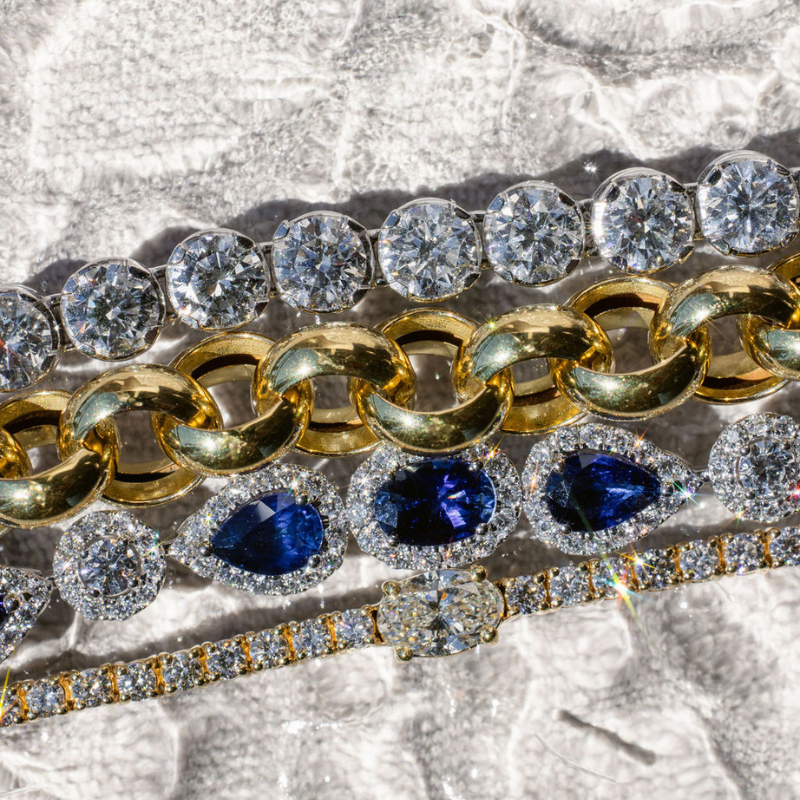
Element 2: Materials
Okay, now that we've honed your vision and inspiration, let's speak about the foundation of your masterpiece — materials. It's similar like selecting the appropriate components for a gourmet dinner. The quality and kind of materials used in your bespoke jewelry creation may make or
break it. Let's go a bit further.
Type of Metals
Metals aren't just about the bling; they’re about durability, aesthetics, and yes, budget.
Gold
Gold has a timeless charm. It's adaptable, with colors including rose, white, and the basic yellow. Watch the karat value; higher karat equals more gold, but it's also softer. Consider how frequently and in what circumstances you will wear the outfit.
Silver
Silver is the go-to for people who want a boho-chic or casual look. It is less costly, but it must be polished on a regular basis to keep its shine owing to tarnishing. A terrific choice for trendier clothing that you might not wear forever.
Platinum
Platinum is the name to remember if durability is your game. It is somewhat more costly, but it is extremely durable and hypoallergenic. Its natural white luster also brings out the radiance of diamonds and other jewels.
Gemstone Selection
Oh, the diamonds, rubies, and sapphires! The 'wow' factor is increased by the use of gemstones. Each stone has its own set of characteristics, which is where the four C's — Cut, Color, Clarity, and Carat — come into play. The shape of the stone affects how it reflects light, color plainly refers to its hue, clarity refers to internal and exterior faults, and carat refers to size. You'll need to establish a balance based on your tastes and financial constraints.
Material Allergies
Finally, don't allow your beautiful artwork become an actual ache. If you have sensitive skin or known metal allergies, tell your jeweler right away. Nickel, which is often present in many alloys, is a common allergen. Platinum and higher-carat gold are frequently safer alternatives for people with sensitive skin.
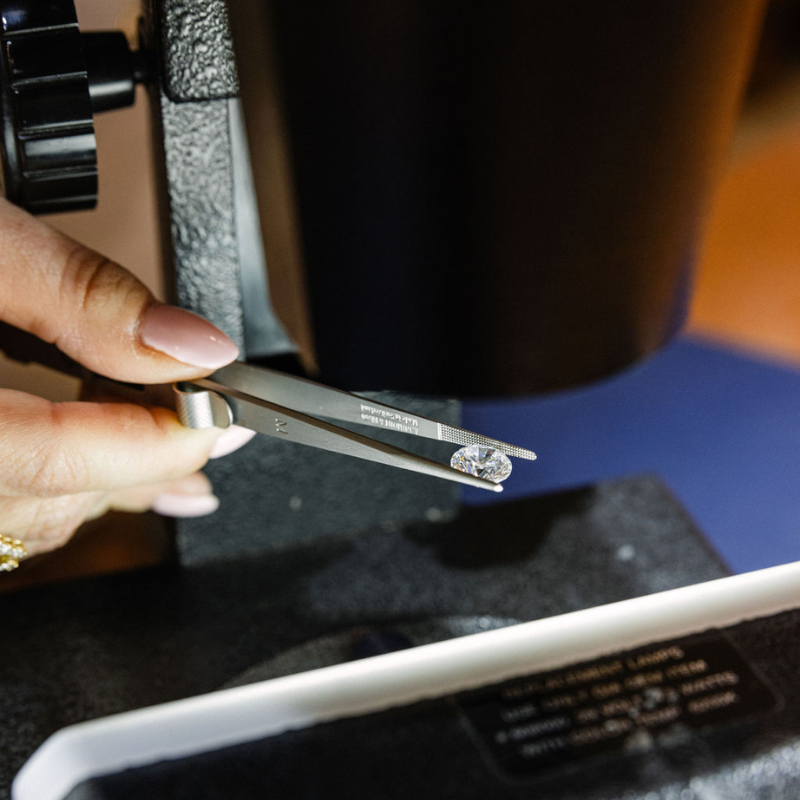
Element 3: Budget
Okay, let's address the green elephant in the room: money. As much as we'd want an unending pot of riches to pour into our bespoke jewelry fantasies, reality frequently plays a different melody. Setting a budget may appear to be stifling creativity, but trust me when I say it's truly freeing. Knowing what you can afford removes possibilities that are out of your price range, allowing you to focus on solutions that provide the most value for your money.
Establishing a Budget
Consider your budget as a guideline rather than a constraint. It is not just about how much money you are prepared to spend, but also about where you want to spend more or less. Do you want to go big on the gemstone but keep the setting simple? Perhaps the metal is more essential to you,
and you're content with a cheaper stone. A budget establishes a realistic framework that corresponds with your goal and keeps disappointments at bay.
Cost Factors
Here's a quick breakdown of some primary cost determinants:
Materials
The price difference between a gold-plated item and a 24-karat gold masterpiece is enormous. Similarly, a natural, high-quality diamond will be more expensive than a synthetic or lower-quality diamond.
Design Complexity
Intricate filigree work, many stones, or complex settings demand the jeweler to devote more time and talent. As they say, time is money!
Craftsmanship
Remember that you are not just paying for materials, but also for the expertise required to bring them together into a cohesive whole. Skilled workmanship is more expensive, but it assures you're receiving a well-made product that will last.
Hidden Costs
Just when you thought you'd figured it all out — bam! There are hidden charges. We're talking about shipping costs, insurance for high-value items, and maybe even aftercare services such as polishing or resizing. Some jewelers may provide a package deal that covers them, but it's always a good idea to inquire so there aren't any unpleasant surprises later.
In a word, your budget isn't an impediment; it's a guide. Having a clear financial plan allows you to focus on making decisions that will bring your dream piece to life with a final cost that will not be breaking the bank any time soon. Budgeting success!
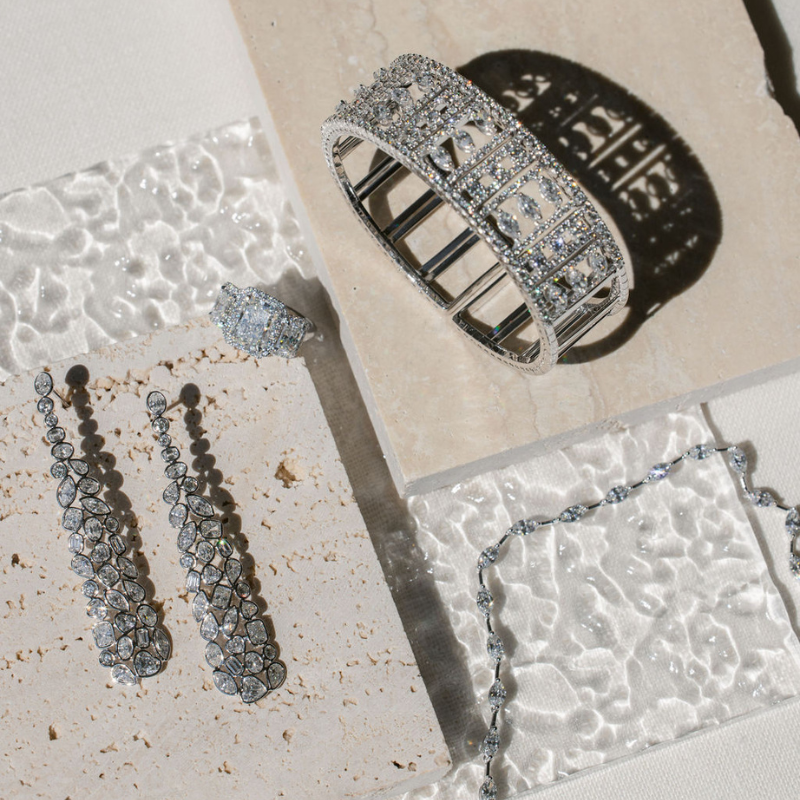
Element 4: Craftsmanship
You've locked down your concept, chosen drool-worthy materials, and set a budget. But now comes the most important stage, the one that will determine whether your bespoke jewelry piece is a smashing success or a forgotten trinket: choosing the appropriate craftsmen.
Finding a Skilled Jeweler
Isn't looking for the perfect jeweler a little like dating? You're seeking for someone who will understand your idea, appreciates it, and has the abilities to make it a reality. Begin with suggestions from friends and relatives who have already dabbled in bespoke jewelry. They can give you candid feedback and may even let you view things their favorite jeweler had made for them. Are there not enough leads? Use the ever-reliable internet. Online reviews and portfolios may be a goldmine of information, providing insight into a jeweler's skill level, dependability, and areas of expertise.
Importance of Craftsmanship
You can have a Michelangelo-level design, but without the workmanship to back it up, you won't have the Sistine Chapel of jewelry. Talk to your jeweler. Ask questions about the previous one-of-a-kind pieces of jewelry they made, the complexity of the patterns, the elegance with which it
was finished, and the secure placing of jewels. All of these are unmistakable characteristics of a skilled jeweler.
Collaboration is Key
Custom jewelry making is a two-way street. Your jeweler should not only be talented, but also willing to work with you. It's critical to feel heard and understood, so keep the lines of communication open. Are they sensitive to your requirements? Do they respond to your inquiries in a clear and intelligent manner? Do they provide suggestions that are in line with your idea? A smart jeweler will know how to combine their knowledge (most through both in person and virtual appointments) without obscuring your eyesight.
Craftsmanship is the cornerstone that connects all other aspects of bespoke jewelry. A professional jeweler should provide not just technical competence but also the interpersonal qualities required for a productive cooperation. After all, you're entrusting them with the creation of your ideal artwork, so select wisely!
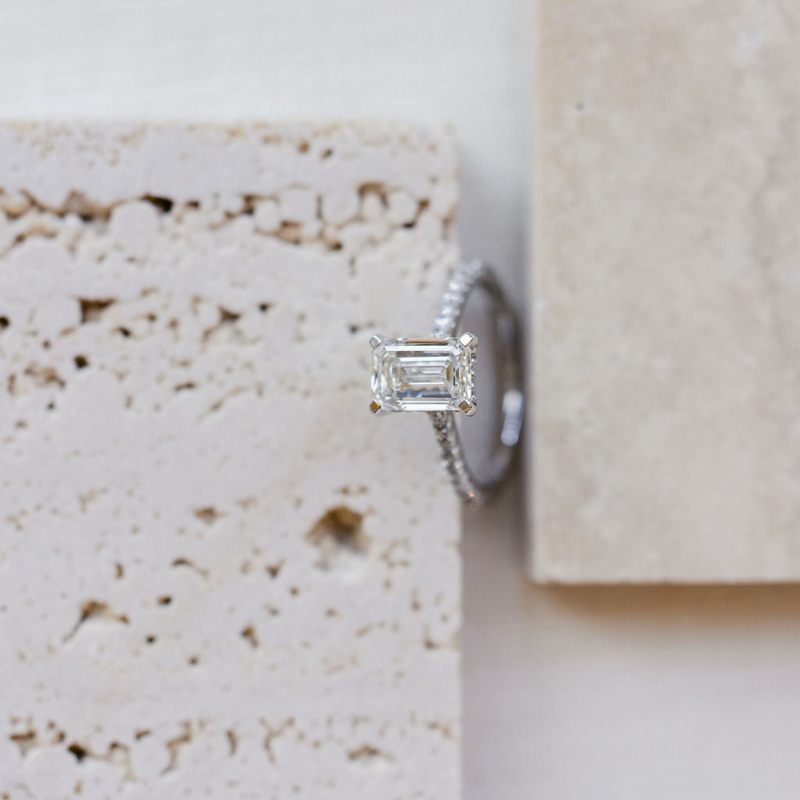
Element 5: Functionality & Durability
So you've got a fantastic idea, expensive materials, a reasonable budget, and even a jeweler who’s practically a mind reader. But don't forget about one final, critical consideration: how practical and durable will your personalized piece be?
Everyday Wear vs. Special Occasions
The first thing to consider is, "When will I wear this?" It may appear easy, but it has a significant impact on your design and material choices.
For example, if you choose something like a custom engagement ring or wedding bands, you will want something incredibly comfortable, which lends itself to every day wear. Ideally, you'll want something comfy, sturdy, and simple to combine with a range of outfits for everyday use. For important events, you may like a more intricate, eye-catching pattern that serves as the focal point of your attire.
Durability Factors
When it comes to everyday wear, durability reigns supreme. After all, the longer you wear it, the more wear and tear it will experience. Choose strong metals such as platinum or high-karat gold that are not only fashionable but also durable. While a ring adorned with small diamonds may appear magnificent, keep in mind that more projecting jewels might mean more chances for harm. For an everyday item, a smooth, flush setting may be more practical.
Versatility
Last but not least, consider how this personalized jewelry piece will complement your existing attire. The more adaptable the product, the better the bang for your dollars! A flexible piece may be worn from day to night or from informal to formal situations. Consider a necklace that may be a modest addition with your business wear but also a focal point with your evening gown. So, when you begin on your bespoke jewelry adventure, bear in mind that a masterpiece is something you can genuinely live with, not simply something that looks beautiful. Make certain that your brilliant creation is more than simply a gorgeous face, but also a trustworthy, long-term friend.
We've certainly covered a lot of territory, haven't we? From the spark of inspiration to the final glittering masterpiece, designing a custom piece of jewelry is an exciting but intricate process. By considering the concept, materials, budget, craftsmanship, functionality and the right jewelry consultant, you're well on your way to creating something extraordinary.
Remember that the joy of custom jewelry lies not only in the final product, but also in the creative journey you take to get there. So, my friends, go ahead and dream large and glitter on!
P.S. Stay tuned because in a future blog you'll see in the coming weeks, we take the approach of wanting custom jewelry but knowing nothing about jewelry design. If you'd like something special, we got you covered! Stay tuned...
If you are looking to commission your own custom jewelry, look no further! Custom jewelry is what we specialize in and we would be more than happy to answer any questions about the overall process. CLICK HERE to make an appointment to speak with a Jewelry Specialist and create the piece of your dreams!
CLICK HERE to learn more from Platinum Guild International
CLICK HERE to learn more from the World Gold Council

